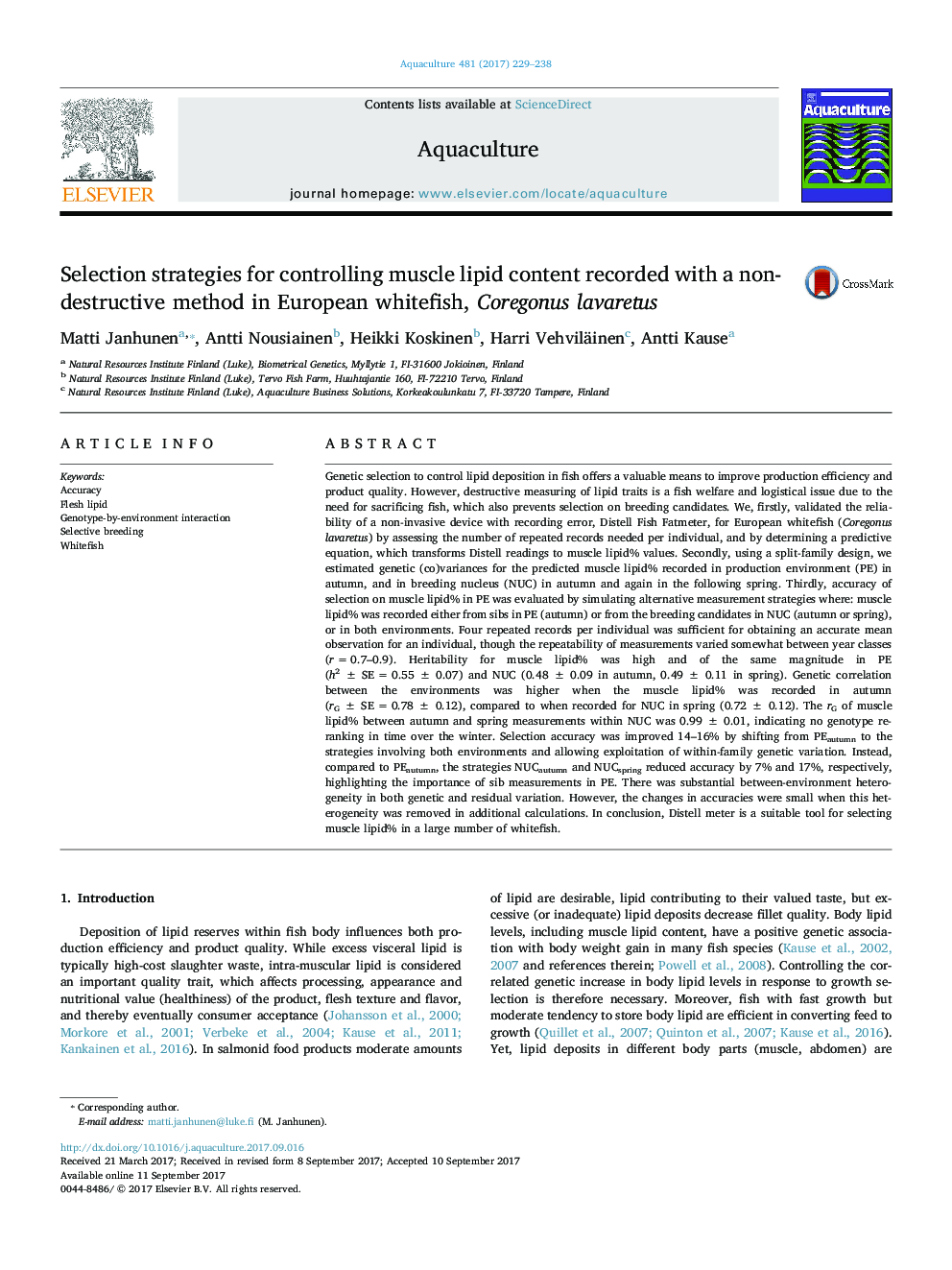| Article ID | Journal | Published Year | Pages | File Type |
|---|---|---|---|---|
| 5538951 | Aquaculture | 2017 | 10 Pages |
Abstract
Genetic selection to control lipid deposition in fish offers a valuable means to improve production efficiency and product quality. However, destructive measuring of lipid traits is a fish welfare and logistical issue due to the need for sacrificing fish, which also prevents selection on breeding candidates. We, firstly, validated the reliability of a non-invasive device with recording error, Distell Fish Fatmeter, for European whitefish (Coregonus lavaretus) by assessing the number of repeated records needed per individual, and by determining a predictive equation, which transforms Distell readings to muscle lipid% values. Secondly, using a split-family design, we estimated genetic (co)variances for the predicted muscle lipid% recorded in production environment (PE) in autumn, and in breeding nucleus (NUC) in autumn and again in the following spring. Thirdly, accuracy of selection on muscle lipid% in PE was evaluated by simulating alternative measurement strategies where: muscle lipid% was recorded either from sibs in PE (autumn) or from the breeding candidates in NUC (autumn or spring), or in both environments. Four repeated records per individual was sufficient for obtaining an accurate mean observation for an individual, though the repeatability of measurements varied somewhat between year classes (r = 0.7-0.9). Heritability for muscle lipid% was high and of the same magnitude in PE (h2 ± SE = 0.55 ± 0.07) and NUC (0.48 ± 0.09 in autumn, 0.49 ± 0.11 in spring). Genetic correlation between the environments was higher when the muscle lipid% was recorded in autumn (rG ± SE = 0.78 ± 0.12), compared to when recorded for NUC in spring (0.72 ± 0.12). The rG of muscle lipid% between autumn and spring measurements within NUC was 0.99 ± 0.01, indicating no genotype re-ranking in time over the winter. Selection accuracy was improved 14-16% by shifting from PEautumn to the strategies involving both environments and allowing exploitation of within-family genetic variation. Instead, compared to PEautumn, the strategies NUCautumn and NUCspring reduced accuracy by 7% and 17%, respectively, highlighting the importance of sib measurements in PE. There was substantial between-environment heterogeneity in both genetic and residual variation. However, the changes in accuracies were small when this heterogeneity was removed in additional calculations. In conclusion, Distell meter is a suitable tool for selecting muscle lipid% in a large number of whitefish.
Related Topics
Life Sciences
Agricultural and Biological Sciences
Aquatic Science
Authors
Matti Janhunen, Antti Nousiainen, Heikki Koskinen, Harri Vehviläinen, Antti Kause,
